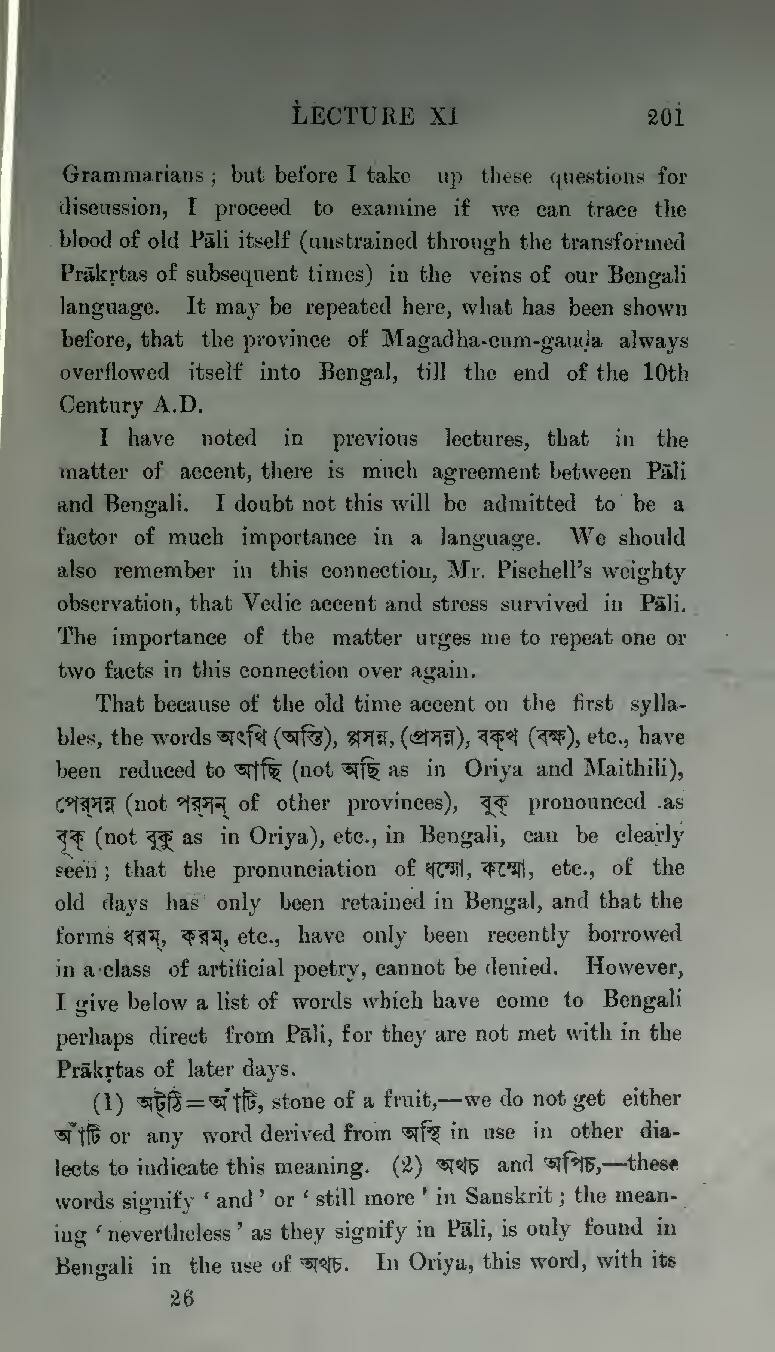Grammarians; but before I take up these questions for discussion, I proceed to examine if we can trace the blood of old Pāli itself (unstrained through the transformed Prākṛtas of subsequent times) in the veins of our Bengali language. It may be repeated here, what has been shown before, that the province of Magadha-cum-gauḍa always overflowed itself into Bengal, till the end of the 10th Century A.D.
I have noted in previous lectures, that in the matter of accent, there is much agreement between Pāli and Bengali. I doubt not this will be admitted to be a factor of much importance in a language. We should also remember in this connection, Mr. Pischell's weighty observation, that Vedic accent and stress survived in Pāli. The importance of the matter urges me to repeat one or two facts in this connection over again.
That because of the old time accent on the first syllables, the words অৎথি (অস্তি), প্পসন্ন, (প্রসন্ন), বক্খ (বক্ষ), etc., have been reduced to আছি (not অছি as in Oriya and Maithili), পের্সন্ন (not পর্সন্ of other provinces), বুক্ pronounced as বূক্ (not বুকু as in Oriya), etc., in Bengali, can be clearly seen; that the pronunciation of ধম্মো, কম্মো, etc., of the old days has only been retained in Bengal, and that the forms ধরম্, করম্, etc., have only been recently borrowed in a class of artificial poetry, cannot be denied. However, I give below a list of words which have come to Bengali perhaps direct from Pāli, for they are not met with in the Prākṛtas of later days.
(1) অট্ঠি = আঁটি, stone of a fruit,—we do not get either আঁটি or any word derived from অস্থি in use in other dialects to indicate this meaning. (2) অথচ and অপিচ,—these words signify 'and' or 'still more' in Sanskrit; the meaning 'nevertheless' as they signify in Pāli, is only found in Bengali in the use of অথচ. In Oriya, this word, with its
